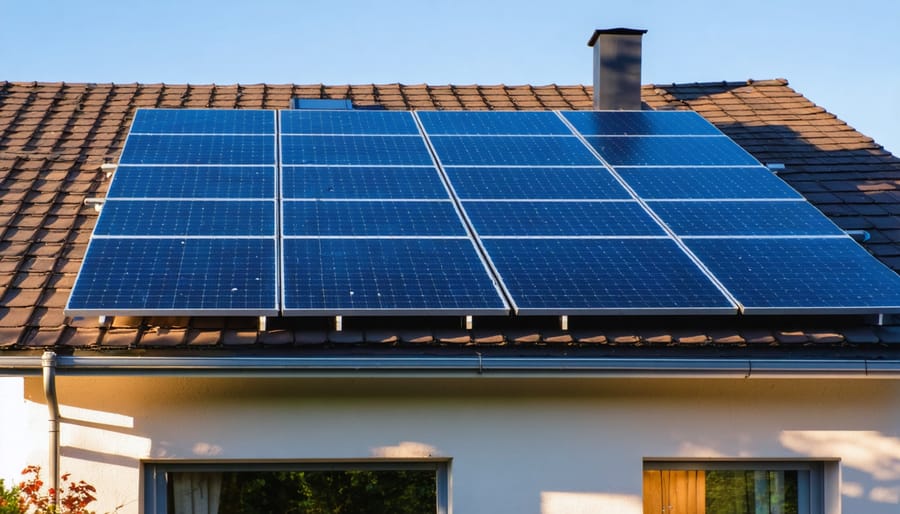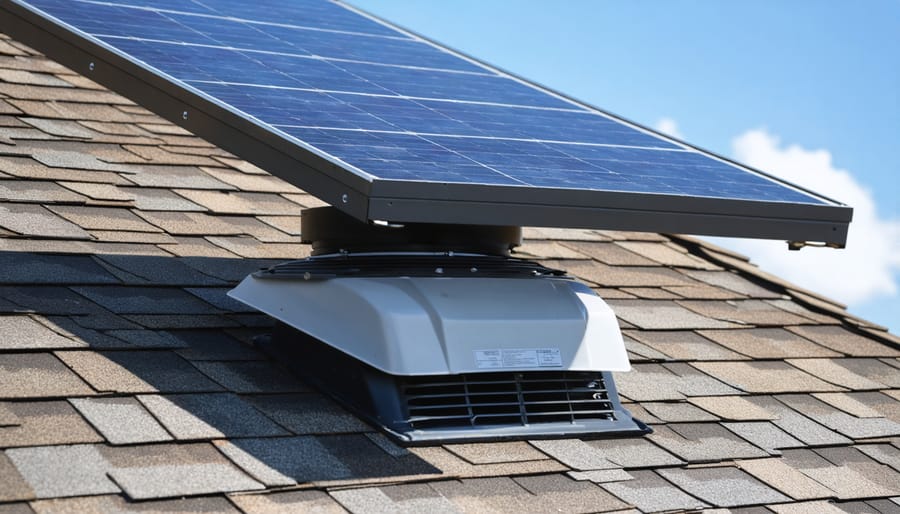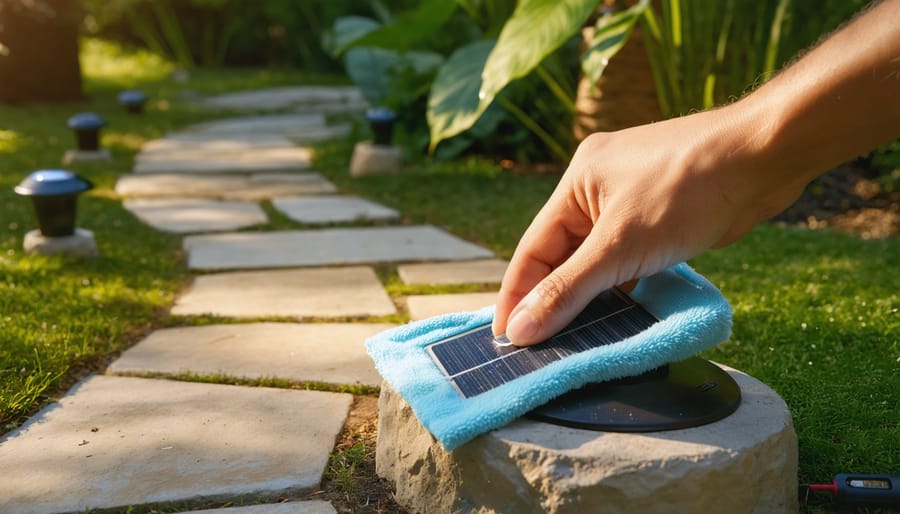Fixing Solar Lights With Nail Polish
Updated:

Fixing solar lights with nail polish is possible by creating a clear, protective coating over the solar cells that helps reflect sunlight more efficiently. This allows the solar panel to absorb more sunlight and charge properly so the light turns on.
This comprehensive guide gives you a step-by-step method to fix solar lights using nail polish, explains how solar lights work and why nail polish repairs them, discusses some troubleshooting tips, and answers common questions.
How to Fix Solar Lights with Nail Polish
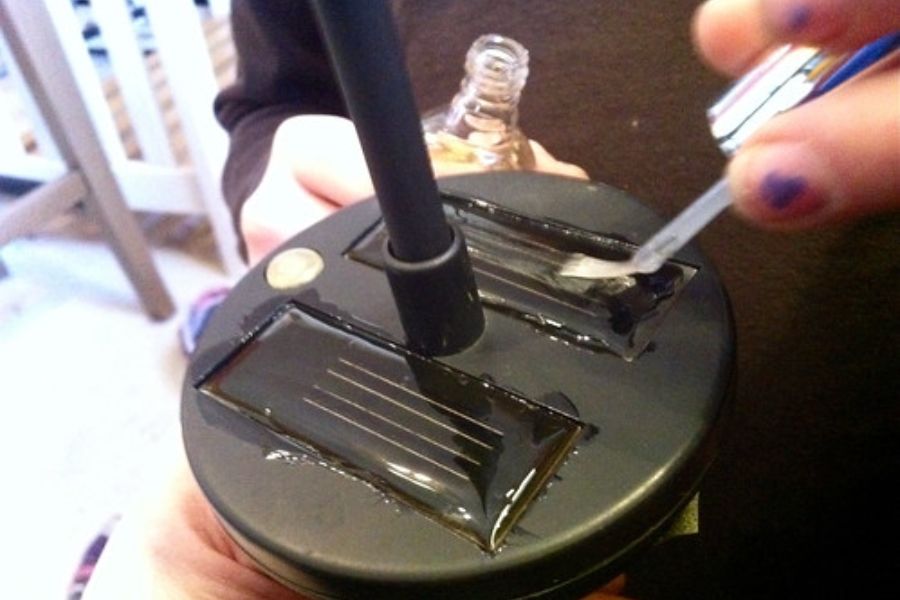
Fixing solar lights with nail polish is an easy, budget-friendly DIY project. Follow these steps:
Step 1: Disconnect the Power
First, unplug the solar lights and disconnect all wiring and batteries. This prevents electrical shorts while working on the unit.
Step 2: Clean the Solar Cells
Wipe away any dirt, dust, or debris from the solar cells using a dry cloth. Make sure they are completely clean so the nail polish adheres properly.
Step 3: Apply a Thin Layer of Nail Polish
Use a small paintbrush to brush on a smooth, even layer of clear nail polish over the solar cells. Avoid clumps or bubbles. Apply polish to any hard-to-reach areas with a Q-tip.
Step 4: Allow Time to Dry
Let the nail polish dry completely, which usually takes a few minutes. Don’t touch the solar cells until the polish has dried.
Step 5: Reconnect and Test
Once dry, reconnect the batteries and wiring. Turn on the solar lights after sunset to see if the brightness improves. The nail polish should make the lights noticeably brighter.
Understanding How Solar Lights Work
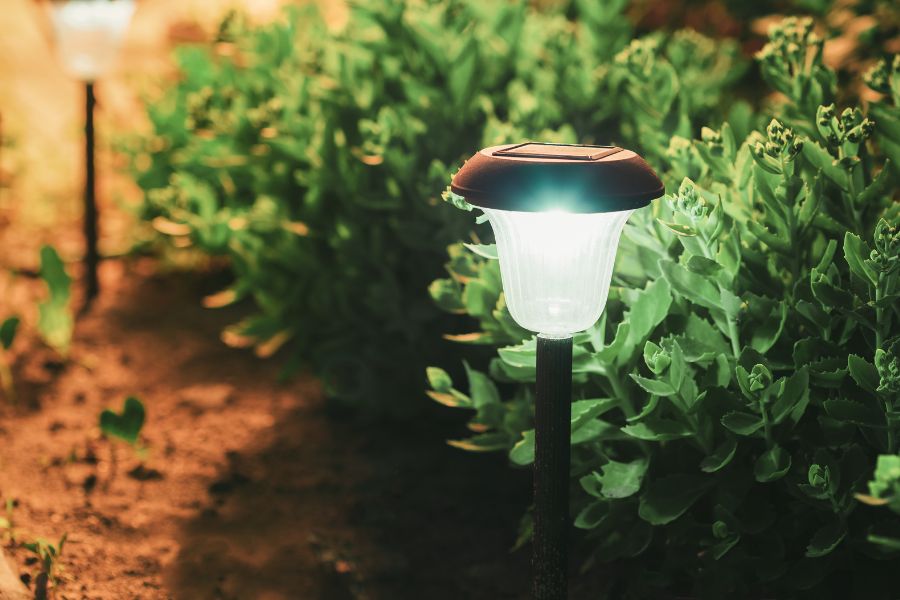
To understand why nail polish fixes solar lights, we must first review how these outdoor lights operate.
Solar lights consist of solar panels (typically on top or sides), batteries, and LED bulbs. The solar panels contain photovoltaic solar cells that absorb and convert sunlight into electricity during daytime. This charges the battery stored inside the unit. At night, the charged battery powers the LED bulb to create brightness.
Plastic covers protect the solar panels from weather damage but can become cloudy over time, blocking sunlight absorption. Cracks in the housing can also let in moisture, leading to corrosion of the solar cells and battery.
Sealing the plastic cover with a transparent nail polish layer allows sunlight to reach the solar cells again, so the battery charges to full capacity. The restored power flow increases the LED bulb’s maximum brightness.
Why Nail Polish Works on Solar Lights
Applying clear nail polish is an effective solar light restoration technique for these reasons:
- Protective Barrier – The nail polish forms a transparent, waterproof seal over the solar cells. This shields them from moisture, scratches, and weather damage.
- Enhanced Light Reflection – The glossy nail polish allows more sunlight to reflect into the solar cells for better energy absorption.
- Prevents Clouding – It keeps the plastic solar cell covers clear so light can pass through.
- Acts as Conductor – The polish helps turn on solar lights with electrical connection issues.
- Improves Light Diffusion – It evenly spreads light from the LED for brighter illumination.
- Seals Cracks – The nail polish can fill small cracks and gaps in the plastic covers to prevent further damage.
- Adds Color – Colored nail polish can be used to customize the solar lights for your outdoor décor.
- Protects From UV Rays – It shields the solar cells from sun damage and fading.
Tips for Using Nail Polish on Solar Lights
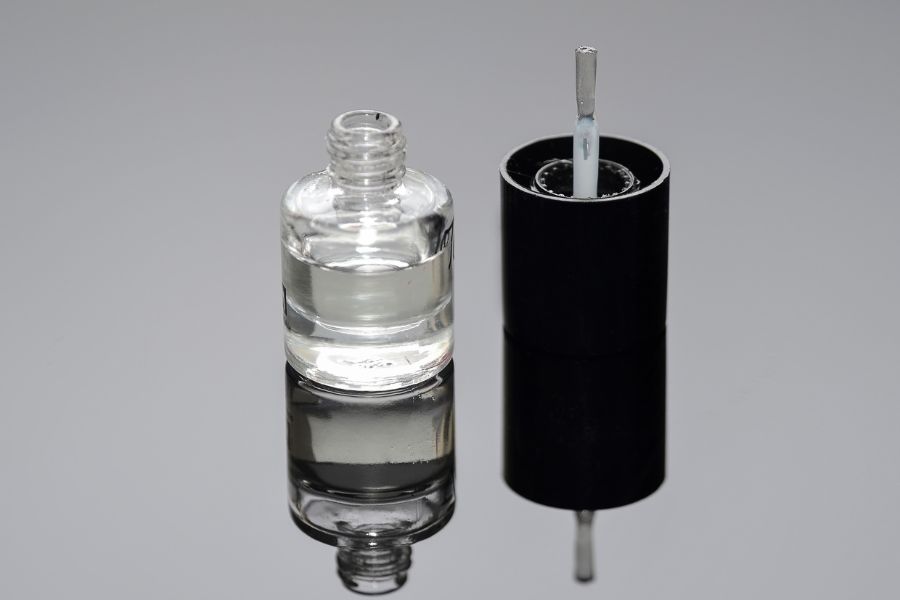
Follow these tips when using nail polish to fix solar lights:
- Only use clear, not colored, nail polish to avoid blocking sunlight absorption.
- Apply a very thin layer of polish, as thick coats may not dry properly.
- Let the nail polish dry completely before reassembling and using the lights.
- Test on one light first to ensure the polish helps improve brightness.
- Avoid getting nail polish on the solar panel surface or LED bulb.
- Consider replacing very old solar lights that don’t improve with nail polish.
- Use nail polish remover to gently clean solar cells before reapplying polish.
- Apply a UV protection spray after using nail polish to protect the solar cells further.
Does Nail Polish Work on All Solar Light Types?
Nail polish works on most plastic-covered solar lights, including:
- Solar Pathway Lights
- Solar Garden Lights
- Solar String Lights
- Solar Spotlights
- Solar Accent Lights
- Solar Post Lights
- Solar Security Lights
- Solar Fence Lights
Avoid using nail polish on solar lights with glass or metal protective covers, as it may not adhere well or could damage these materials. Always check the instructions the solar light manufacturer provides before applying nail polish.
Troubleshooting Solar Lights After Using Nail Polish
If your solar lights still don’t work properly after using nail polish, try these troubleshooting tips:
Light Doesn’t Turn On
- Check connections and wiring
- Test or replace the battery
- Remove any dirt blocking the solar cells
- Ensure the light is getting direct sunlight during the day
Dim Light
- Apply another thin coat of nail polish
- Clean solar cells with nail polish remover and reapply polish
- Replace the LED bulb if it is burnt out
Light Turns off and On
- Make sure batteries are fully charged
- Check for loose wiring connections
- Test the light sensor
Light Stops Working After a Few Days/Weeks
- Solar cells may need to be polished and sealed again
- A battery may be old and need replacement
- The LED bulb may have burnt out
If you’ve tried these fixes and the solar light still has issues, it may need to be replaced.
Maintaining Solar Powered Lights
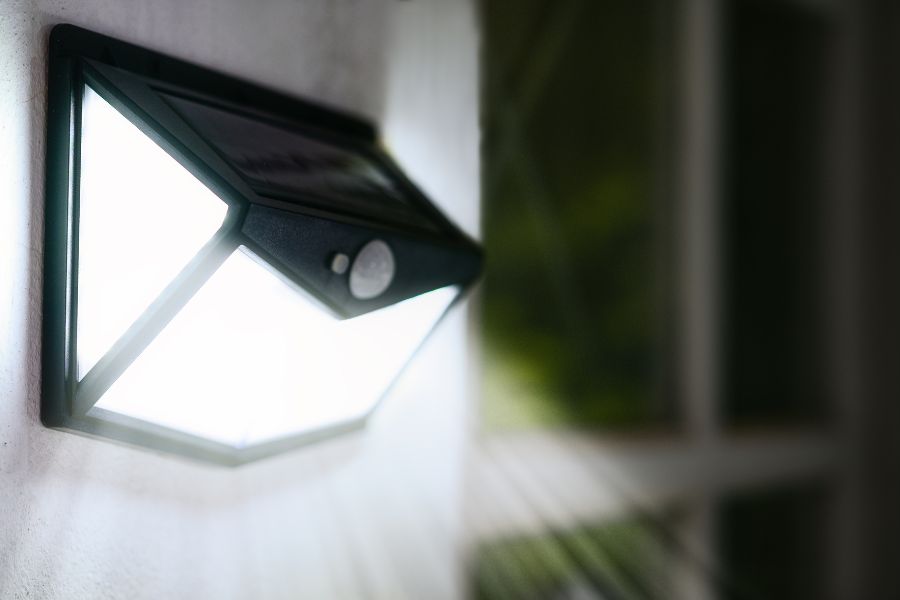
With proper care and maintenance, solar lights can work reliably for years:
- Keep plastic covers clean. Make sure to wipe away dirt monthly with a soft, dry cloth to allow maximum light to reach solar cells.
- Check batteries before each season. Try to replace them every 2-3 years or when capacity drops.
- Bring solar lights indoors during extreme weather or store in a covered area to prevent housing damage from hail, high winds, etc.
- Reapply protective nail polish when dimming returns, typically every 1-2 years, depending on the polish quality and environmental exposure.
- Inspect lights occasionally for cracks or damage. Replace solar panels or lead wires as needed.
With simple maintenance, your solar lights will stay brightly lit year after year!
FAQs
Can You Use Colored Nail Polish on Solar Lights?
No, only use clear nail polish. Colored polish can block sunlight absorption and prevent the solar cells from working properly.
Does Nail Polish Remover Damage Solar Panels?
Nail polish remover is safe for cleaning solar cells if they are not cracked or scratched. Avoid acetone-based removers on plastic solar cell covers.
How Do You Clean Cloudy Plastic Solar Light Covers?
Use a mild detergent and water to clean the plastic surface gently. Rinse well, then apply a thin layer of clear nail polish to restore clarity.
Why Did My Solar Lights Stop Working?
Check the battery, connections, and LED bulb if the solar cells are clean.
Insufficient sunlight or aged solar components can also cause lights to stop working properly.
Can Hairspray Be Used Instead of Nail Polish on Solar Lights?
No, avoid hairspray. It can leave a residue that blocks sunlight absorption. Nail polish is a safer option.
How Often Should I Reapply Nail Polish to My Solar Lights?
Plan on reapplying a thin layer of nail polish every 2-3 months to maintain the protective barrier on the solar cells.
What if Nail Polish Doesn’t Fix My Solar Lights?
If your lights don’t improve after 2-3 nail polish applications, the solar components may be too deteriorated for DIY fixes. New replacement lights may be needed.
Can I Use Nail Polish on Solar Panels for My Home?
No, nail polish should only be used on small solar lights. It is not recommended for residential or commercial solar photovoltaic panels.
Is There an Alternative to Using Nail Polish for Fixing Solar Lights?
UV-resistant spray sealants are another option, but nail polish is more effective and long-lasting. Always read manufacturer recommendations.








